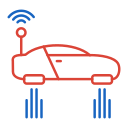Challenges and Opportunities in Autonomous Urban Mobility
The emergence of autonomous vehicles and their integration into urban environments is reshaping the future of mobility. As cities evolve into smarter, more connected spaces, self-driving vehicles present both significant possibilities and complex hurdles. This transformation brings forth critical questions about how we move, plan, and live within urban spaces. Exploring these challenges and opportunities provides valuable insights into the trajectory of autonomous technology and the implications for urban development, policy-making, and daily life.
Complexity of Urban Environments
Navigating Unpredictable Human Behavior
City streets are populated with pedestrians, cyclists, and drivers exhibiting a wide range of behaviors that are often spontaneous and unregulated. For autonomous vehicles, interpreting body language, anticipating sudden movements, and reacting to unexpected obstacles require advanced perception and reasoning capabilities. Machine learning models must account for endless scenarios, from jaywalking pedestrians to distracted bicyclists swerving across lanes. The challenge lies in ensuring that vehicles can make nuanced, context-aware decisions in real time while maintaining passenger comfort and public trust.
Infrastructure Challenges and Limitations
Urban infrastructure was not originally designed for the seamless operation of autonomous vehicles. Roadways may lack consistent lane markings, clear signage, or dedicated lanes for self-driving cars. Construction zones, temporary detours, and unpredictable events can hamper the sensors and mapping systems that autonomous vehicles rely on. Upgrading infrastructure to support these technologies demands significant investment, urban planning, and cross-sector collaboration. The transition period, with traditional and autonomous vehicles sharing the road, further complicates the adaptation process.
Data Processing and Real-Time Decision Making
In bustling urban environments, vast amounts of data are generated from vehicle sensors, traffic lights, and other connected devices. Processing this information in real time to make accurate driving decisions is a significant challenge. Autonomous vehicles must filter critical signals from noise, prioritize urgent threats, and coordinate with city management systems effectively. High-speed data processing, robust algorithms, and reliable connectivity are essential to prevent latency-related accidents and to ensure smooth traffic flow.
Regulatory and Ethical Considerations
Current traffic laws and vehicle regulations are based on the assumption of human drivers and conventional vehicles. Introducing autonomous vehicles requires a comprehensive review and adaptation of these frameworks to address new operational models, insurance requirements, and accident liability. Policymakers must collaborate with industry leaders to draft standards that accommodate the nuances of autonomous technology while safeguarding public welfare.

Impact on Employment and Workforce Transition
As autonomous vehicles become more capable, traditional driving-related jobs, such as taxi, delivery, and public transit drivers, may diminish. This shift represents a significant disruption for individuals who rely on driving for their livelihoods. Policymakers and business leaders face the responsibility of supporting workforce transition through retraining programs and creating new employment opportunities in technology, maintenance, and mobility services connected to autonomous systems.
Accessibility and Equity in Urban Mobility
Autonomous vehicles offer the promise of increased mobility for those who may be underserved by current transportation systems, such as the elderly or individuals with disabilities. However, ensuring equitable access to these technologies requires careful attention to pricing models, service coverage, and the removal of physical and digital barriers. Engaging with diverse community groups and stakeholders will be crucial in designing urban mobility systems that are truly inclusive and can serve as a model for social progress.
Building Public Trust and Willingness to Adopt
Public perception of safety and reliability plays a central role in the adoption of autonomous vehicles. Incidents involving technology failures or accidents can quickly erode trust. Education campaigns, pilot programs, and transparent communication about system capabilities and limitations are essential to address concerns and foster acceptance. Urban planners and mobility providers must prioritize dialogue with residents to align innovations with community needs and values, ensuring a seamless transition to autonomous mobility.
